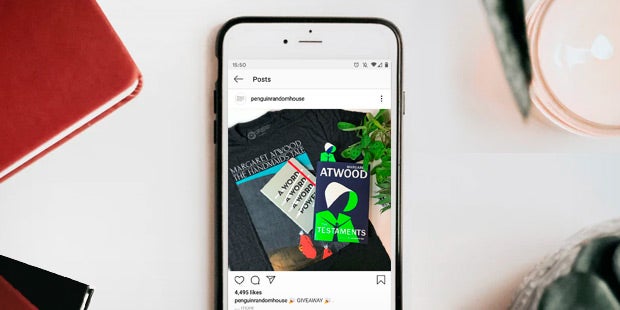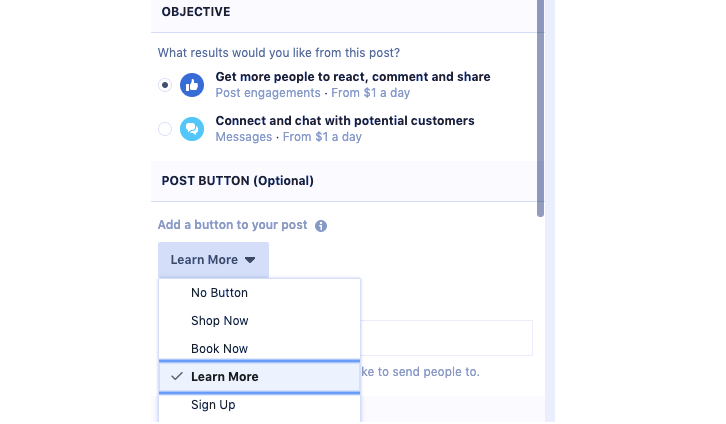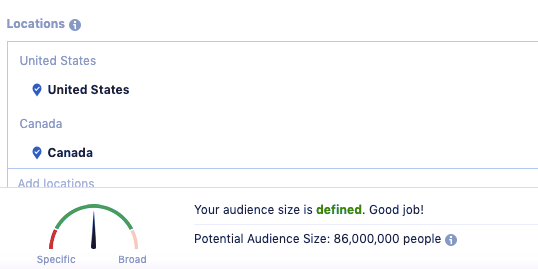As you get better acquainted with social media use, you may eventually consider the option of promoting your posts to a wider audience. In this article, we’ll go over the fundamentals of and FAQs about promoting your posts on social media.
Of course, promoting posts is neither required nor expected of you as an author. The members of your marketing team at Penguin Random House are often experts in digital advertising, so before launching any ad campaign, you should reach out to get their perspective.
However, if you’re interested in learning more about the process, and the costs involved, here are some FAQs about promoting your posts on social media:
Which platforms work best for promoting posts?
There are many social media platforms, and just about all of them feature some way to promote your posts to a wider audience.
LinkedIn and Pinterest both have built-in advertising features, so if your primary audience is on either of these sites, it might be something to consider.
Many authors and their audiences are on Twitter, but their promotions are generally more expensive, and—because Twitter knows less about its users than other sites—not always well targeted.
When it comes to flexibility in price, precision of targeting, and ease of use, Facebook and Instagram often make the most sense for authors.
So in this article, we’ll focus on Facebook and Instagram.
Which posts work best when promoted?
When choosing a post to promote, think briefly about the sponsored posts on Facebook or Instagram that most often grab your attention. Generally speaking, you’re going to want the post to have a captivating image, and you’ll want the caption to be snappy.
When taking a picture of your book, think back to this recent post and make sure you’re ticking all the boxes: Lighting, Setting, Composition, and Props. Still, when you’re creating a promoted post, you want to make sure that the book itself is the star—so make sure it doesn’t get too lost in the staging or landscape! Also note that promoted posts will be denied or shown to a limited audience if there’s too much text, so do not add text to the photo; save that for the body of the post. (The text on your book cover, of course, is okay!)
Then think about the goal: Do you want to increase sales? Get more newsletter subscribers? Get more followers? Whatever the goal, you’ll want to create a clear, concise message with a call to action at the end.
Once you’ve proofed the draft, and you’re happy with it, post it for your followers. You can boost immediately, or you can wait for some initial feedback from your followers before you promote the post. But note that once you publish the post, you will no longer be able to edit it!
How do I promote a post?
- Set an objective
On Facebook, you’ll be given the option to favor either engagements or messages to connect with potential customers. Since the latter is geared more to storefronts, you’ll want to choose “Post engagements.” On both Instagram and Facebook, you’ll be given the option to set up a “Learn More” button that goes to a specific link. This is where you can put your buy link, newsletter sign-up link, or whatever best fits your goal.
- Targeting the right audience
Your audience is usually set up through Facebook—even when you’re using Instagram—so it’s worth starting there. If you want to focus on those who follow your Facebook page but don’t often see your posts, click “People who like your Page.” Otherwise, consider setting up your own targets: location (keep this consistent with the territories in which your book is sold), age (keep this in your target age range, but consider leaving it broad to start—you can always narrow it later), and interests.
For interests, add as many as you find relevant to your book. “Reading” and “Literature” apply to all, but you can get quite granular with these audiences to target the exact type of person who would want your book. Remember that these are targeted to those who express any of these interests—they don’t need to enjoy them all. Facebook will give you an idea of how well defined your audience is.
- Setting a duration and budget
Always make sure to set a budget cap in your Facebook Ads Manager so that you don’t accidentally overspend. Set a total budget and duration for your post. For your first attempt, it might make sense to set up a low and slow campaign. You can spend as little as $1.00 per day, and a small investment can give you a lot of information about your audience on each platform.
- Analyzing the response
By going into your Ads Manager on Facebook, or clicking “Promoted Posts” in your settings on Instagram, you can analyze each campaign. Take into account the breakdown by gender, age, and location. Do multiple small tests to see what sticks and what doesn’t. Does one country tend to interact most with your posts? Does one age group click through to your buy links more than others?
As with many of our social media tips, analyzing the response and keeping track of your findings is the best way to make sure you’re getting the most out of your posts. This is true whether or not you decide to put any money into post promotion!
Promoted posts are never a requirement, but compared to other types of advertising, you do get a lot of return for a small investment. And with Facebook and Instagram’s precise targeting, you’ll find that you’re often reaching audiences who want to learn about—and hopefully buy!—your book.
Phil Stamper-Halpin is Senior Manager, Publishing Development & Author Platforms for Penguin Random House.




